The base-spec version of the new BMW 3 Series must be the best in class to drive if the model is to be hailed a success, declared product manager Stephan Horn ahead of its world debut at the Paris show this week.
Dynamic leadership was determined as the key goal for the new car – codenamed G20 and the successor to the F30 model generation – following appraisals taken from customers, media reviews and critical assessment of rivals, which began five years ago. “Our reputation is built on making the best car to drive, and while the current car is good, we knew we could do more and knew our rivals were pushing us hard,” said Horn.
Although Horn was reluctant to talk about competitors, two new rival car launches are believed to have prompted BMW’s decision: first, the Jaguar XE, which went on sale in 2015 and was widely regarded to have established a new dynamic benchmark in the class; and the Alfa Romeo Giulia, which was introduced in 2016 and drew praise from enthusiasts for its on-the-limit handling.
Despite the significant updates to the 3 Series, Horn stressed that the Giulia comparison was not entirely relevant. “A 3 Series must be both brilliant to drive when you want to push it and brilliantly relaxing when you want to go for a long drive,” he said. “We could never build a car that has your nerves on edge the whole time, or which only excites on the track. The bandwidth in which our car must operate must be wider than for any rival.”
First drive: BMW 3 Series 330i M Sport prototype
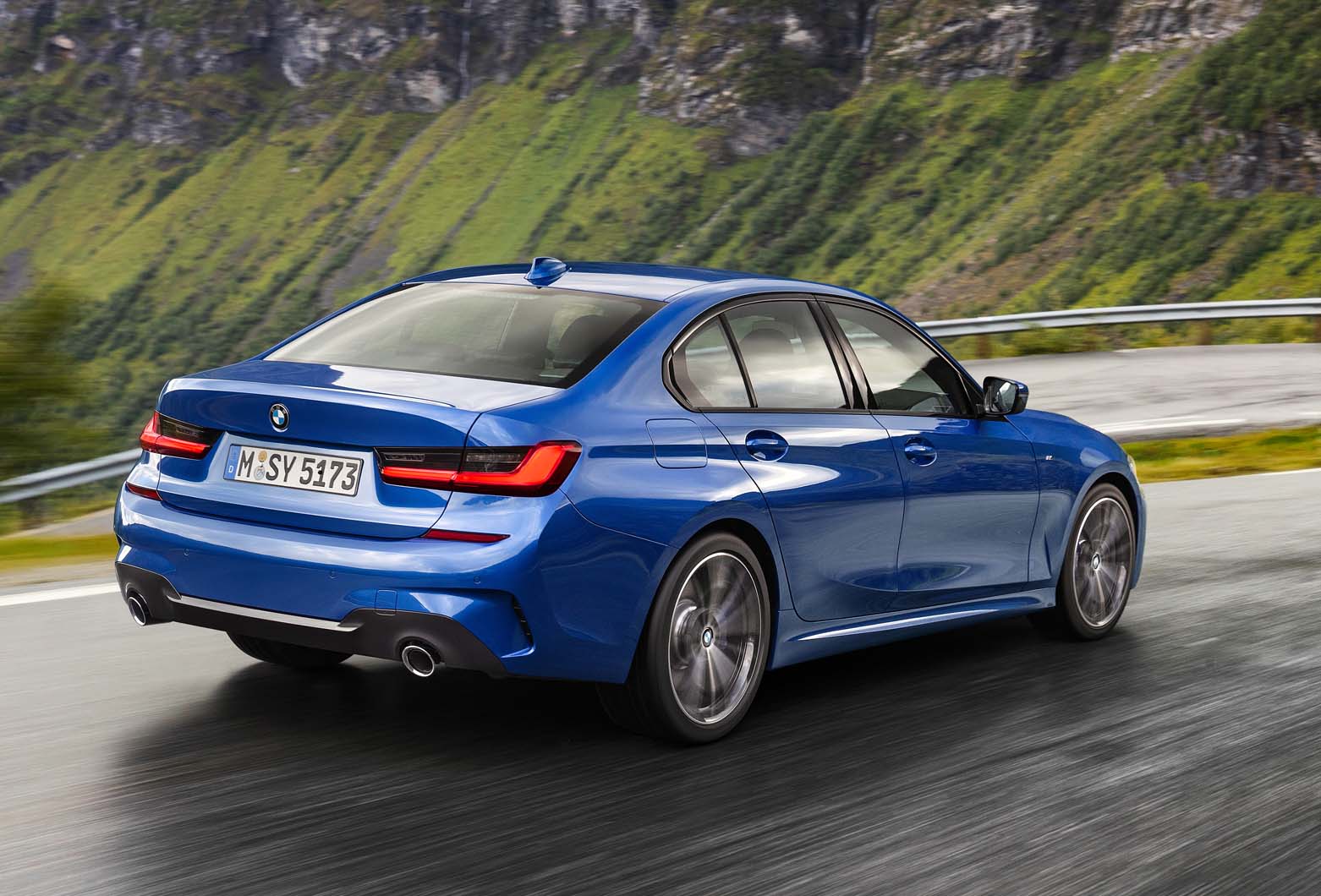
The 3 Series now sits on the same underpinnings as the 5 Series and 7 Series and is therefore a little bit larger, lighter and safer than the outgoing model. The extra length is almost entirely dictated by enhanced crash regulations and the styling challenges they in turn have thrown up.
Significantly, the 3 Series’ axle tracks have widened at both the front and rear, with MacPherson strut suspension used up front and a multi-link arrangement at the rear. Key to the dynamic updates is an innovative new passive damping system that, combined with stiffer springs on the suspension, is said to make the 3 Series sharper to drive but also, when road surfaces deteriorate, allows the car to maintain a flat, composed ride. In addition, the steering set-up has been overhauled.
All of these developments were extensively tested in the UK, mostly in Wales. “The UK is a major market for the car, and we know that if we can make it work on the types of roads you encounter around Wales, then it will work in most places,” said Horn. “When your goal is to be the best, then you test the car in the places where it will be most challenged, and we’re confident that the hard work will deliver good results.”
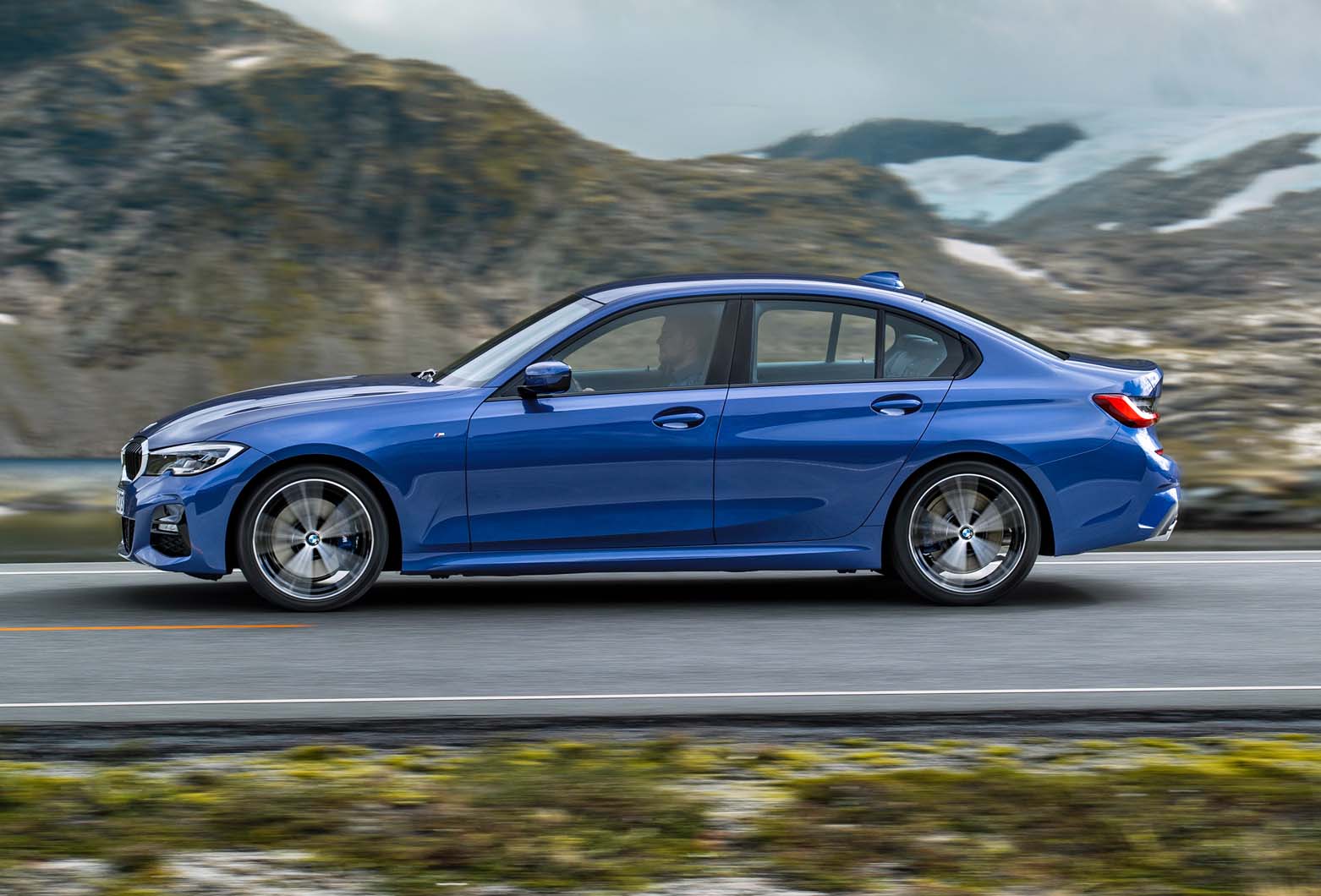
Buyers also have the option of enhancing the 3 Series’ dynamic capabilities by moving up the trim levels from SE or Sport to M Sport, which sits 10mm closer to the ground and features more rigid bearings, additional body struts, firmer springs and anti-roll bars and more wheel camber. An optional M Sport Plus pack includes a more advanced active adaptive damping system and the option of a limited-slip differential.
Horn added that BMW’s engineers have now acknowledged they had overcomplicated previous model line-ups by making the highest level of dynamic performance accessible only to cars fitted with optional active damping. As a result, it is the new 3 Series base car that has been most extensively benchmarked against rivals.
“Putting your most concentrated development focus on something that buyers may or may not decide to put on their car is perhaps not the best way,” said Horn. “We want every 3 Series buyer to know that they have the best-handling car in class. In this respect, we have aimed to ensure every buyer has the best car in the class and, at the same time, it has underpinned a goal for the entire car, which is to make speccing it as simple as possible.”
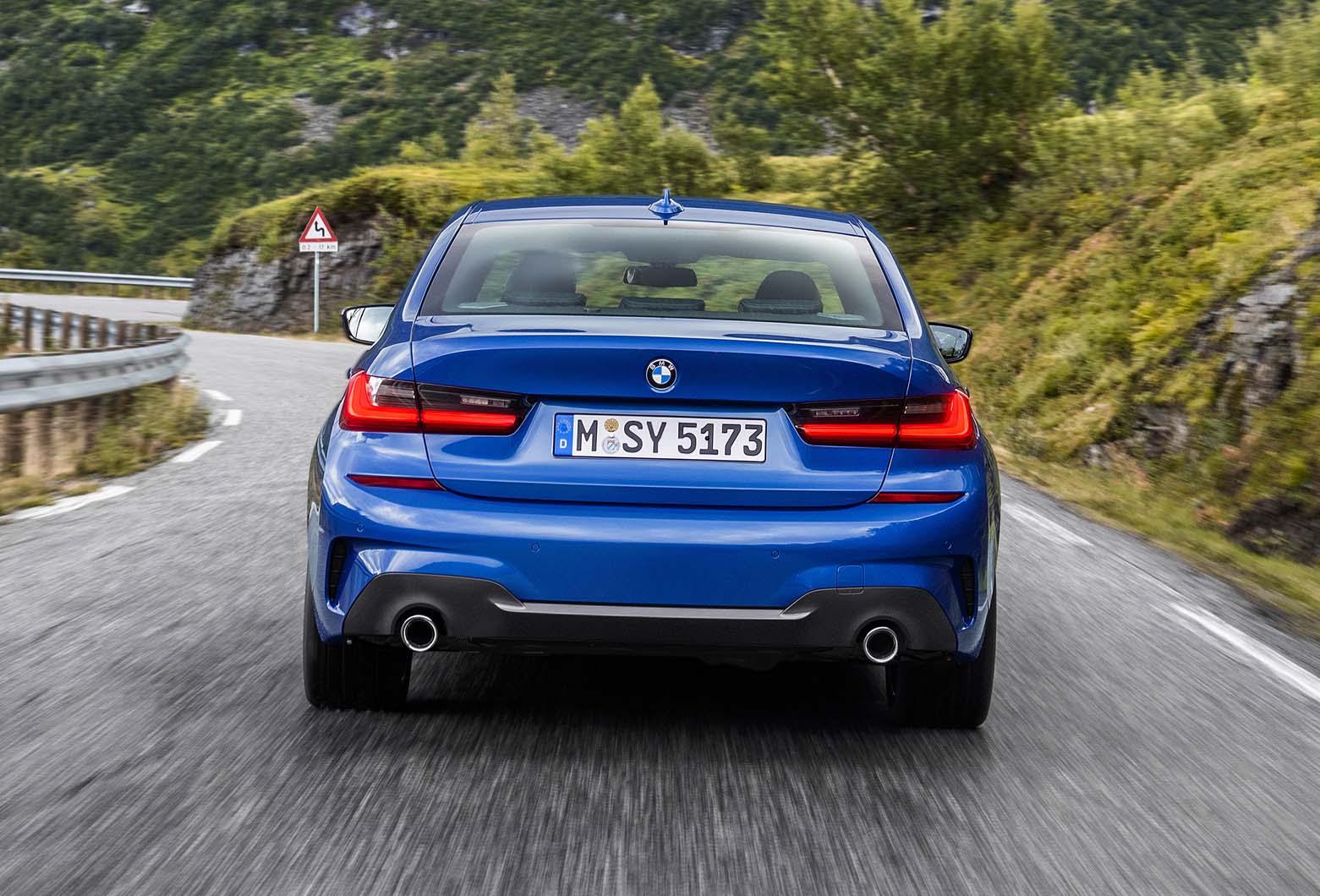
When deliveries begin next March, power will come from a choice of two diesels and one petrol. The usually bestselling diesel 320d will be available in standard form and with xDrive four-wheel drive. It will make 161bhp and 295lb ft of torque, in line with the outgoing Efficient Dynamics model of today but less than the 187bhp of the standard 320d.
The 0-62mph time is 6.8sec, fuel economy with the eight-speed automatic is rated at 64.2mpg and CO2 emissions are 115g/km. Four-wheel drive adds 0.1sec to the 0-62mph time and lowers fuel economy to 58.9mpg. There won’t be an Efficient Dynamics model, with Horn saying that it was deemed appropriate to only offer the more efficient engine. However, complications from the requirement to test every variant as part of the more stringent WLTP fuel tests are also likely to have played a part in the decision.
The 254bhp four-cylinder petrol 330i will also be offered in the UK and is expected to gain in popularity if current anti-diesel trends continue.
It delivers 295lb ft of torque, accelerating from zero to 62mph in 5.8sec and recording 46.3mpg and 132g/km of CO2 with the automatic gearbox. Fuel economy and emissions are boosted by a significant step in the 3 Series’ aerodynamic profile. Within 12 months of launch, a plug-in hybrid variant, called the 330e iPerformance and offering around 35 miles of electric- only range and 39g/km of CO2 output, will be available. A provisional 0-62mph time of 6.0sec has been suggested.
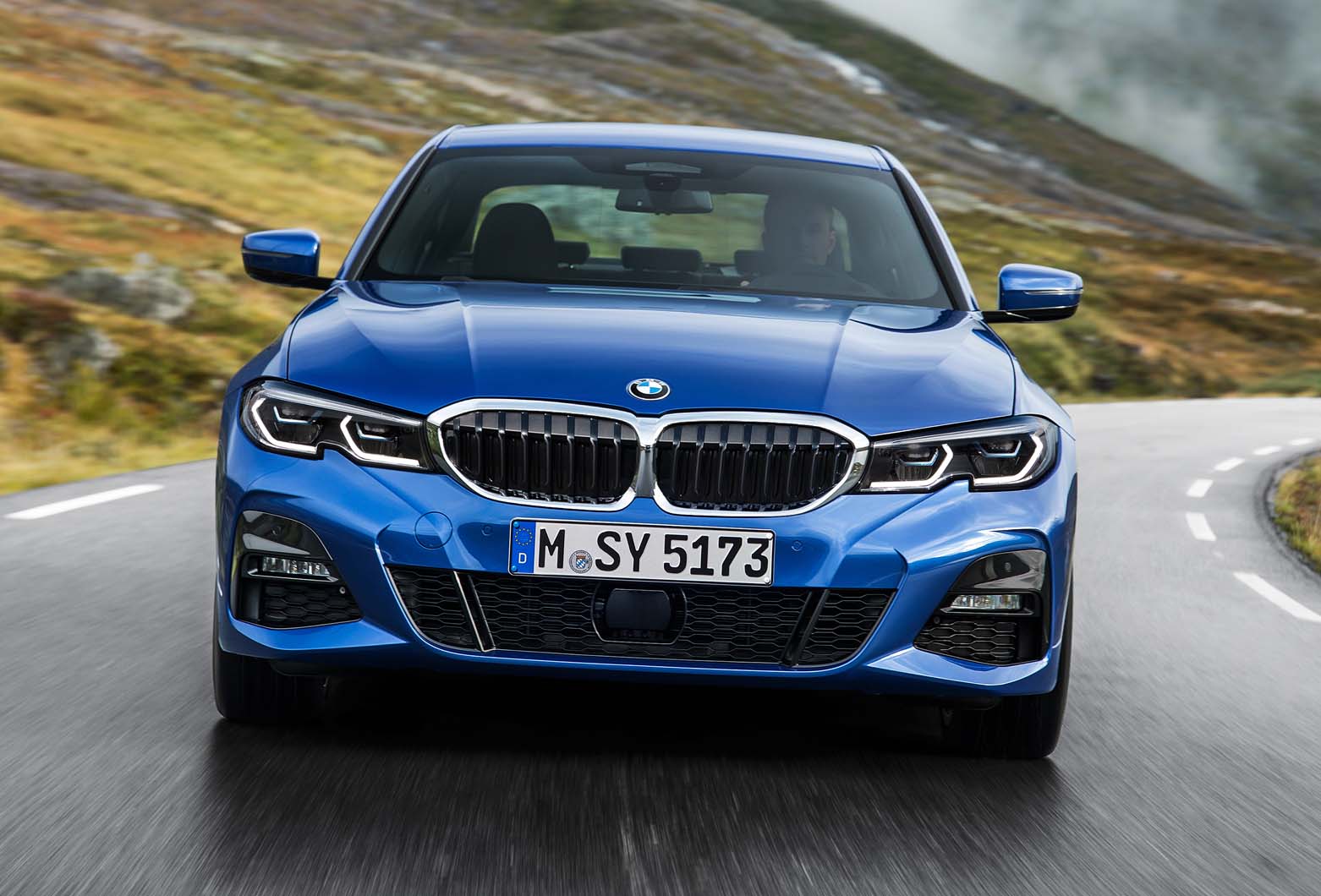
Beyond dynamic ability, two other key areas identified as ripe for change from the current 3 Series were improving the look and feel of the interior and isolating the interior further from wind and road noise by the addition of significantly more insulating materials in the bulkhead and A-pillars and by installing a double-glazed windscreen as standard.
While the 3 Series cabin was always well regarded for the quality of its materials and the way they were screwed together, feedback suggested that some specs could also leave it looking drab. Now, even on base SE models, there are better materials again, and based on our chance to sit in the car, it is clear that the materials are further enhanced, hard plastics are reserved for the extremities only and the inclusion of ambient lighting strips and a sports steering wheel as standard lift the ambience.
Furthermore, more optional flourishes, such as horizontal seat stitching, are available and buyers can also opt to switch the analogue speed and rev dials on the dashboard for a digital display, which can be toggled to show the sat-nav’s map and instructions, as pioneered by Audi.
The infotainment screen is 8.8in as standard – the same size as the largest screen on the outgoing car – and can be upgraded to a 10.25in unit as already available on the new BMW X5. It is controlled via BMW’s latest iDrive system, which has been warmly received for retaining intuitive one-touch buttons as well as allowing access to functions via a rotating controller and on-screen options. For the first time on a BMW, the car’s software can also be updated remotely so that features can be added or upgraded.
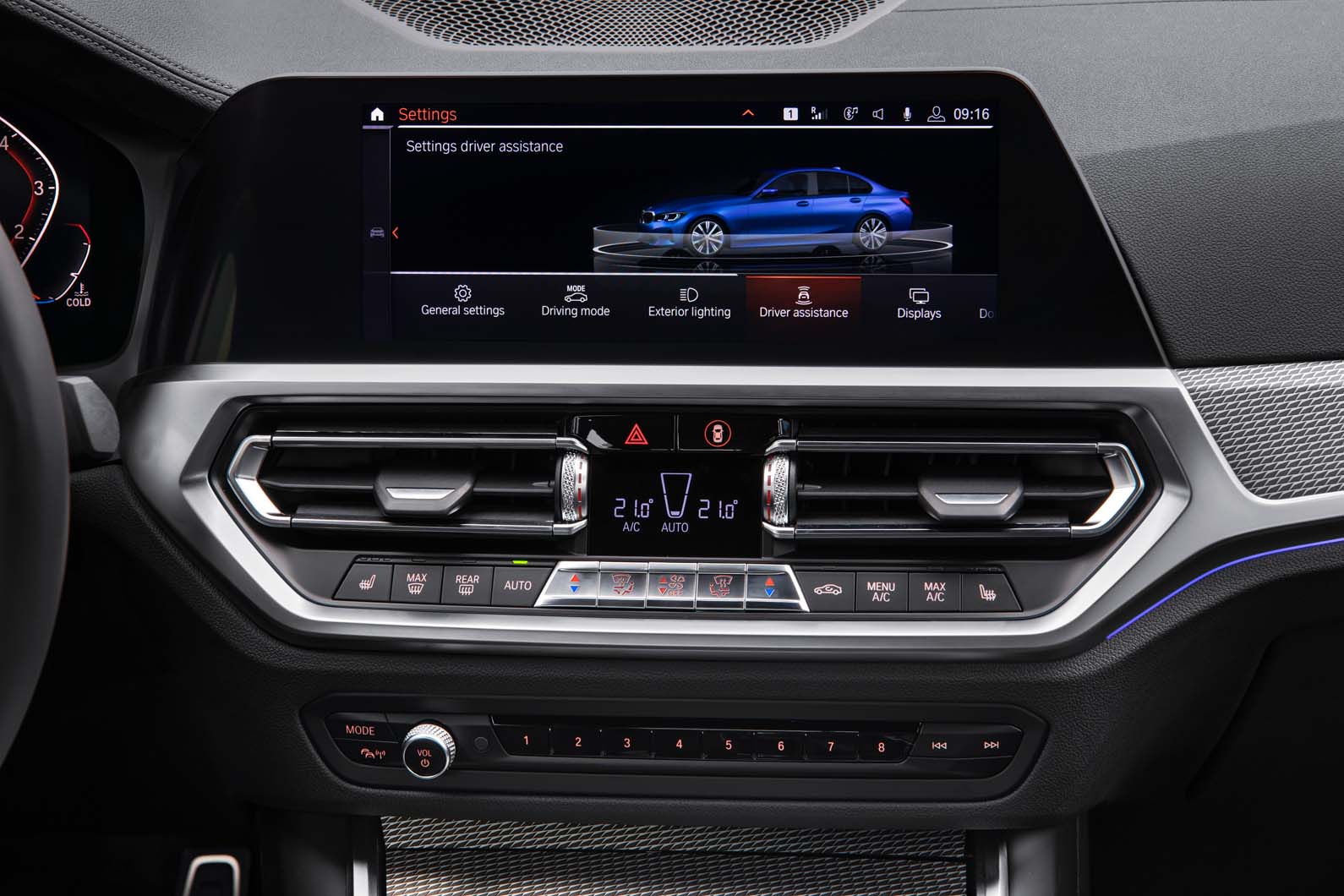
The small increase in exterior dimensions doesn’t translate into much more space inside the car, BMW reasoning that if you needed more, you would buy a 5 Series. As a result, apart from a fraction more width, the interior is the same size, with the same ratio of space front and rear. Practicality and usability have been improved, though, with the rear seats now split 40/20/40 as standard, more storage cubbies being available, a same-sized but better-shaped boot and the option of up to five USB ports, for instance.
A variety of driver assistance functions are available as standard now, including systems to steer, accelerate and brake the car on motorways and in traffic, and to detect potential impacts with pedestrians or bicycles. The most eye-catching technology is a new, unique function, most useful for getting out of parking spaces and available as standard, that records the last 50 metres you drove and that can automatically reverse the route for you.
The car is also significantly better equipped as standard than the outgoing car, with kit including a reversing camera, puddle lights, LED headlights, three-zone air conditioning and folding door mirrors.
To boost residual values and make choosing options easier, BMW will sell the 3 Series with a range of five pack options that bundle together items with a similar purpose, ranging from the sporty M Sport Plus option to Comfort, Premium Technology and Visibility offers. There are just nine individual options that buyers can specify.
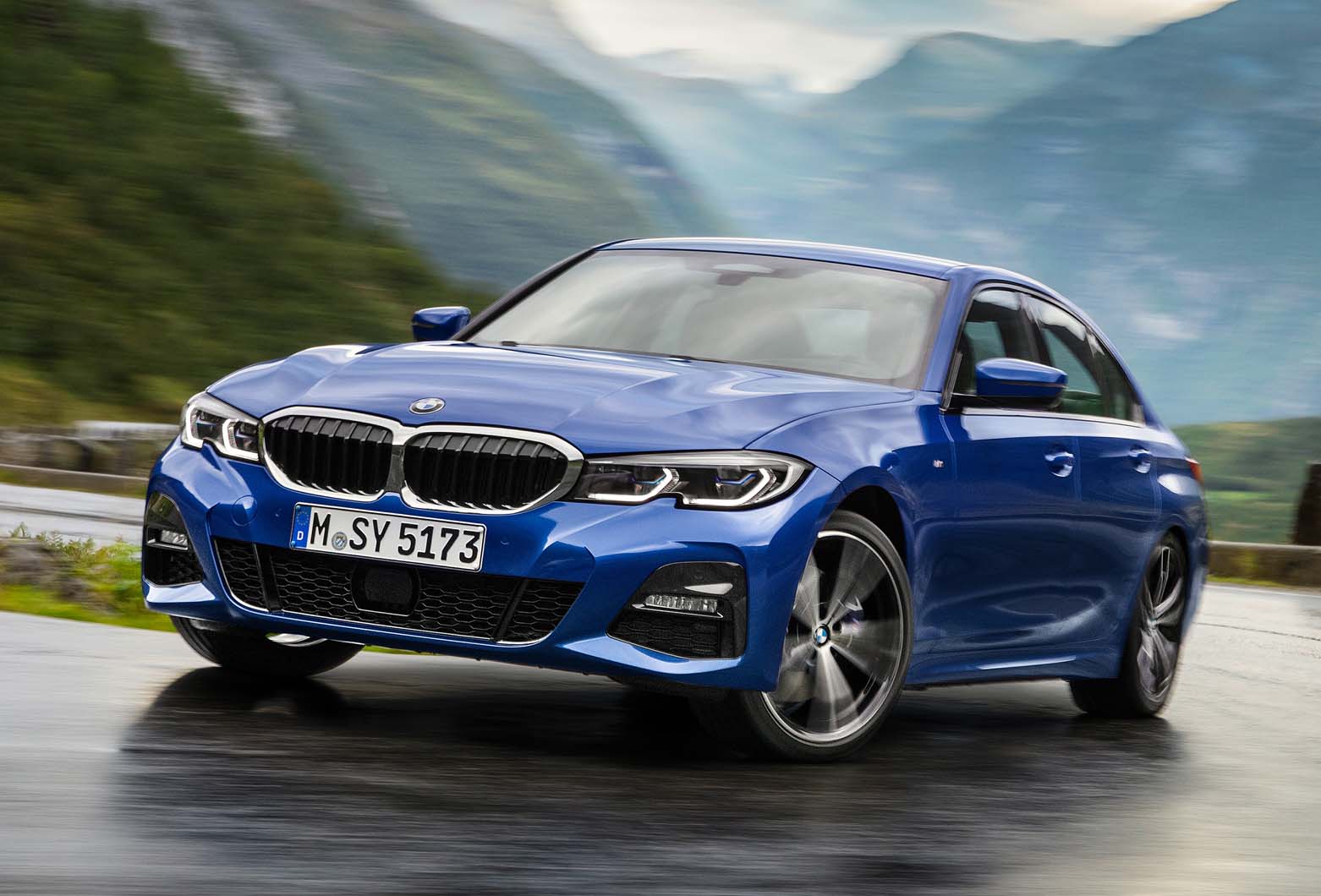
Prices will start from £33,610, which, BMW says, is in line with the prices for the current car once the cost of the additional, now-standard options have been taken into account. However, with the marketplace more hotly contested than ever, it is likely that discounts will also be available once the initial rush of interest in the car has subsided.
Long live the saloon:
As car firms race to meet demands for SUVs and electrification, it’s easy to forget the importance of a good old-fashioned saloon. The new 3 Series is a reminder that you shouldn’t.
Since it was launched in 1975, the 3 Series has been BMW’s bedrock, its perennial bestseller that both underpins and supports its expansion into other areas. Naturally, then, with this latest generation, BMW hasn’t sought to dramatically reinvent the 3 Series: why should it, when the old one still sells in big numbers?
Even if the 3 Series isn’t a radical design departure, one thing is clear about BMW’s recent cars: whether it’s the 3 Series, 8 Series or Z4, BMW has shown a clear commitment to producing proper driver’s cars, dynamic motors with all-round ability. Why? Because with the rise of SUVs, it’s not enough just to produce a saloon any more: it has to be a saloon that’s demonstrably better than ever. If BMW does that, the3 Series will remain its bedrock for years to come.
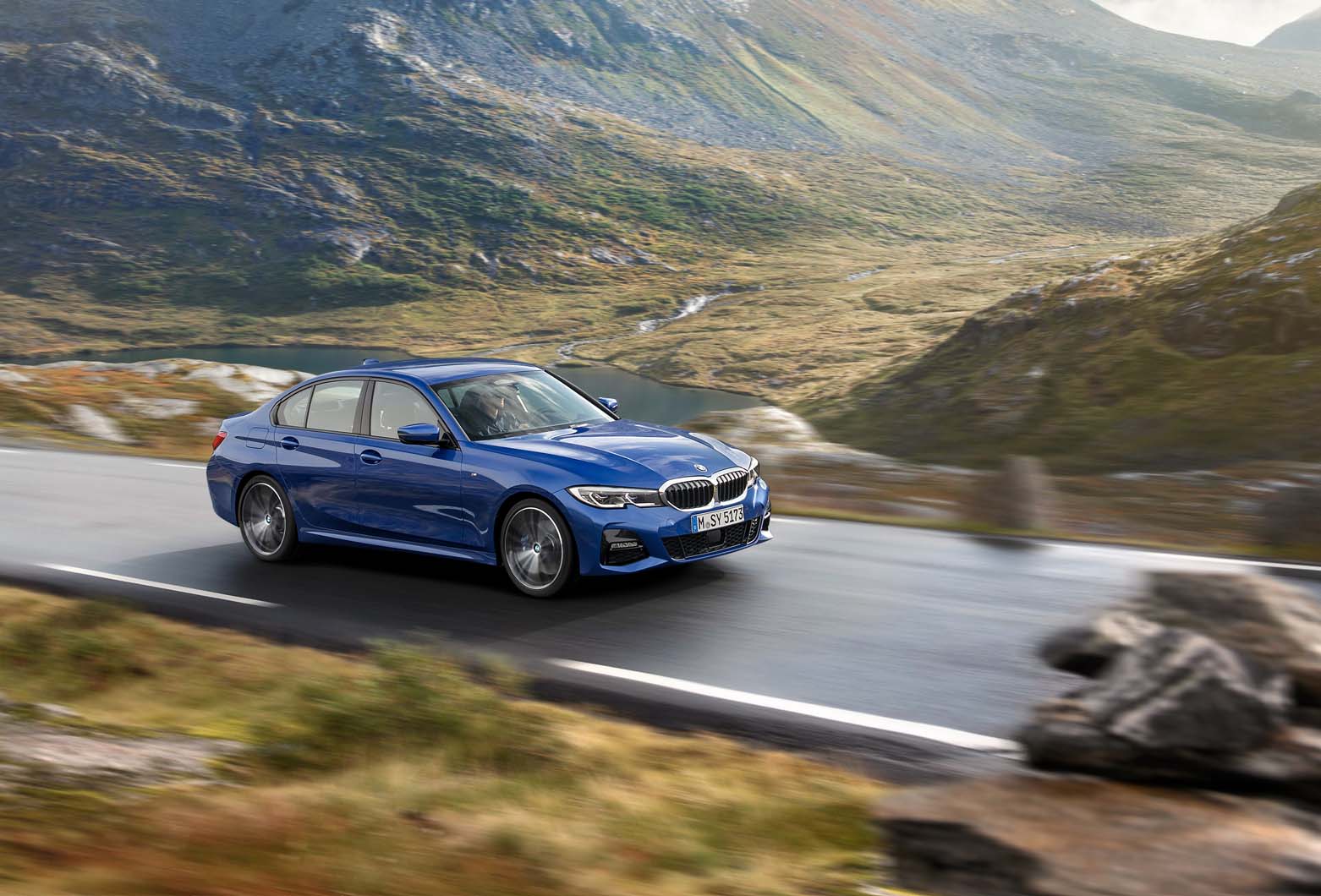
What’s it like to drive?
A chance to drive a prototype of the new BMW 3 Series in 330i M Sport guise a few months ago revealed much promise, if no certain conclusions.
The suspicion is that, in this configuration, an Alfa Romeo Giulia probably remains a more compact and lighter-feeling, marginally more incisive and naturally agile saloon. But then, modern BMWs are relatively complicated, more specification-sensitive cars than most of their executive rivals and I wouldn’t be at all surprised to find that, in just the right mechanical trim, this car could dive and swivel left and right just as keenly as its Italian challenger.
Only certain drive modes were available to try on the test drive and this passively suspended 330i M Sport on 19in rims could have been forgiven for struggling a bit in Comfort mode. But the new 3 Series rideswith a surprisingly settled suppleness and dexterity for something of an explicitly sporting brief.
It does feel a little bit firm at low speeds and slightly busy over smaller ruts and bumps taken at speed. But it has suspension that’s seemingly capable of working hard within the wheel housings without ruining the level poise of the body until it really needs to.
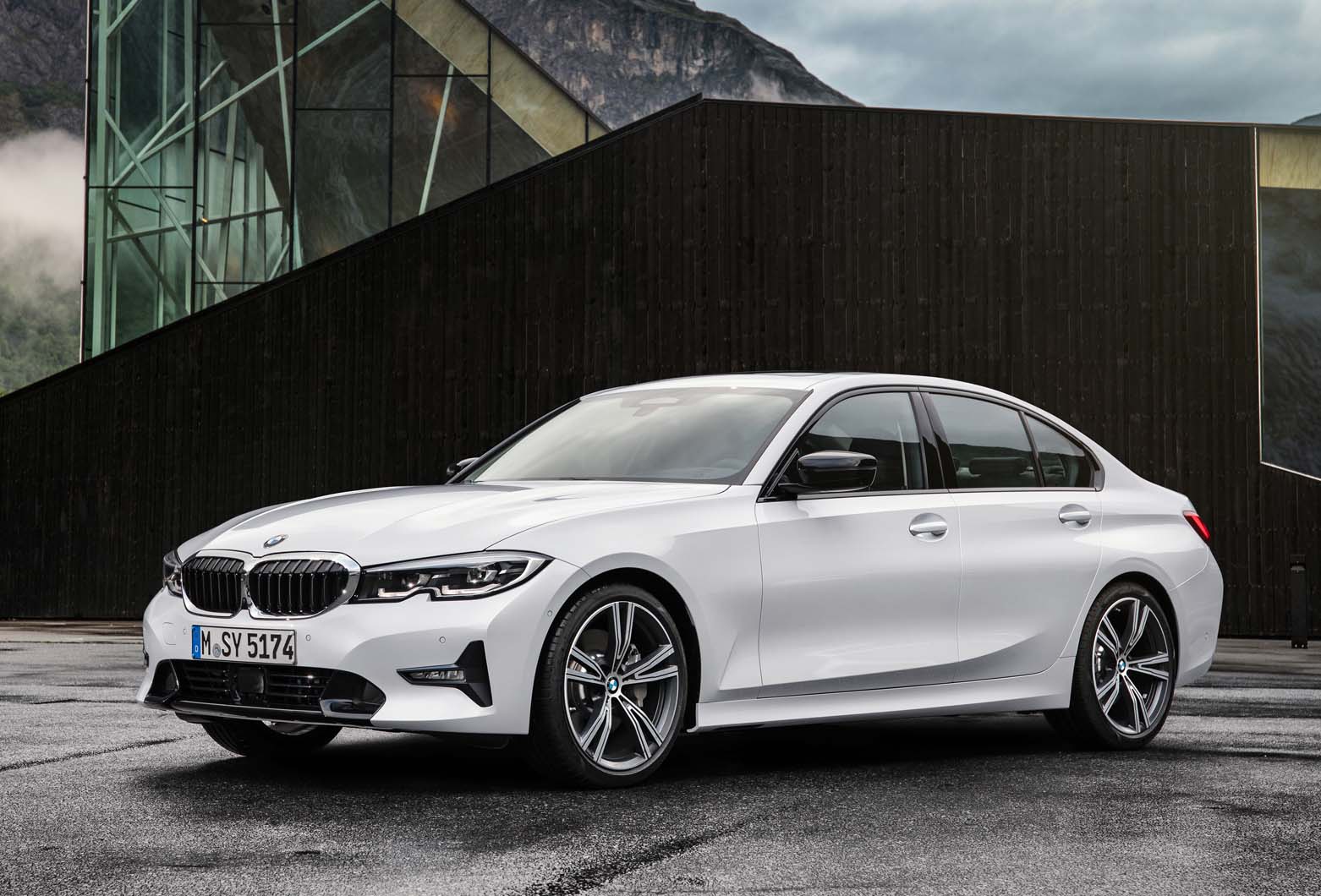
Plenty of Tarmac imperfections are therefore heard but not really felt too much from the driver’s seat – and despite the progressive settings of both spring and damper, the car’s ride frequency feels honest and predictable as the bumps get bigger.
The suspension’s outright ability to absorb punishment without running out of travel, meanwhile, is quite remarkable – up there with a really well-sorted hot hatchback.
After a switch to Sport+ mode (the only other available to test), the 330i’s steering got meatier and a touch more precise just off centre, without risking the over-assisted pace of the Giulia’s rack or even the initial directness of the XE’s.
The reason, of course, is that BMW is focused on catering for the customer who wants to relax a little at 200km/h (124mph) on the autobahn.
Q&A: Stephan Horn, BMW 3 Series product manager:
Do you always start to develop a new car five years before it is launched?
“For the most important cars, yes. It means that owners have had about two years in the previous model, so the feedback can be quite specific. We can combine that with the impressions from media tests and, of course, with our own and get a pretty clear picture of what we need to achieve.
“Of course, that changes with time – but as the clock ticks, there are fewer and fewer things you can adapt. The new dampers needed more space, which made demands on the designers, for instance. Every decision you make has many knock- on effects that you have to consider and then stick to.”
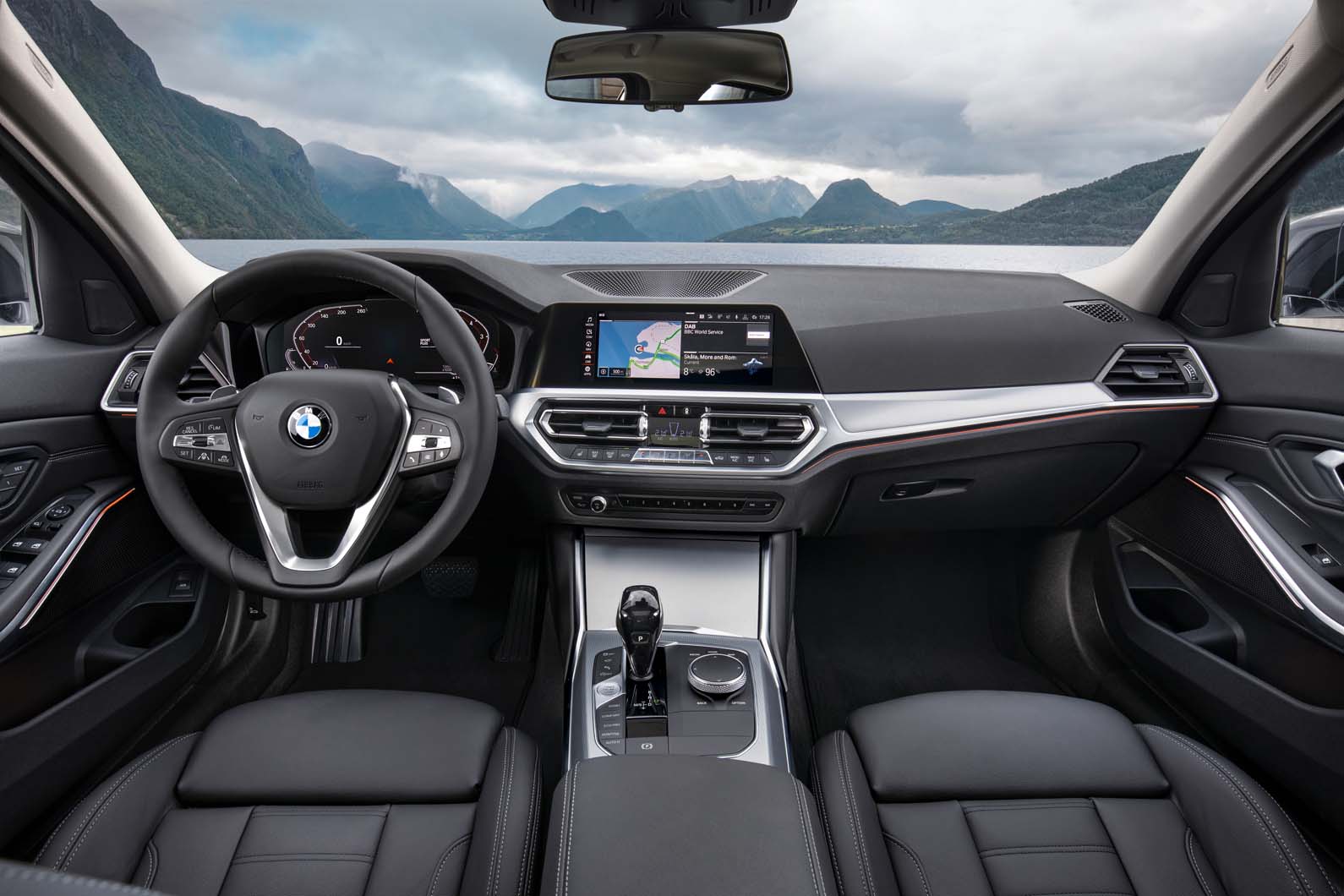
Why is there a wait before the plug-in hybrid variant is launched?
“It’s normal that you produce your bestsellers first, sticking with as many known factors as possible as you go through the complex process of setting the production lines up to run to the standards you expect.
“Once that is done, you can introduce more complexities – such as the addition of a plug-in hybrid. A four-cylinder engine and about 60km [37 miles] of electric range sounds right. But electric isn’t just about efficiency: we hope to use that torque to good effect too.”
Could there be an all-electric variant?
“It’s not in the plans or easily possible. We have other plans for electric cars, starting with the iX3, which we have talked about.”
Is there a danger customers could get overwhelmed by too much technology?
“You have the choice of what you want or whether you use it. We will have petrol, diesel and electric options.
“On other technologies, the point is that much of it you don’t have to use but that it can be useful.
“The remote heating function is a great example. In many climates, you might not want to pull your phone out to pre-heat the car when you are in your home. Fine – you don’t have to use it.
“But if you live somewhere cold, cold enough to spec xDrive for instance, that function would allow you to de-ice the car, warm the cabin and the 15 minutes you save might transform your day.”
Read more
BMW X5 xDrive30d M Sport 2018 review
First drive: BMW 3 Series 330i M Sport prototype




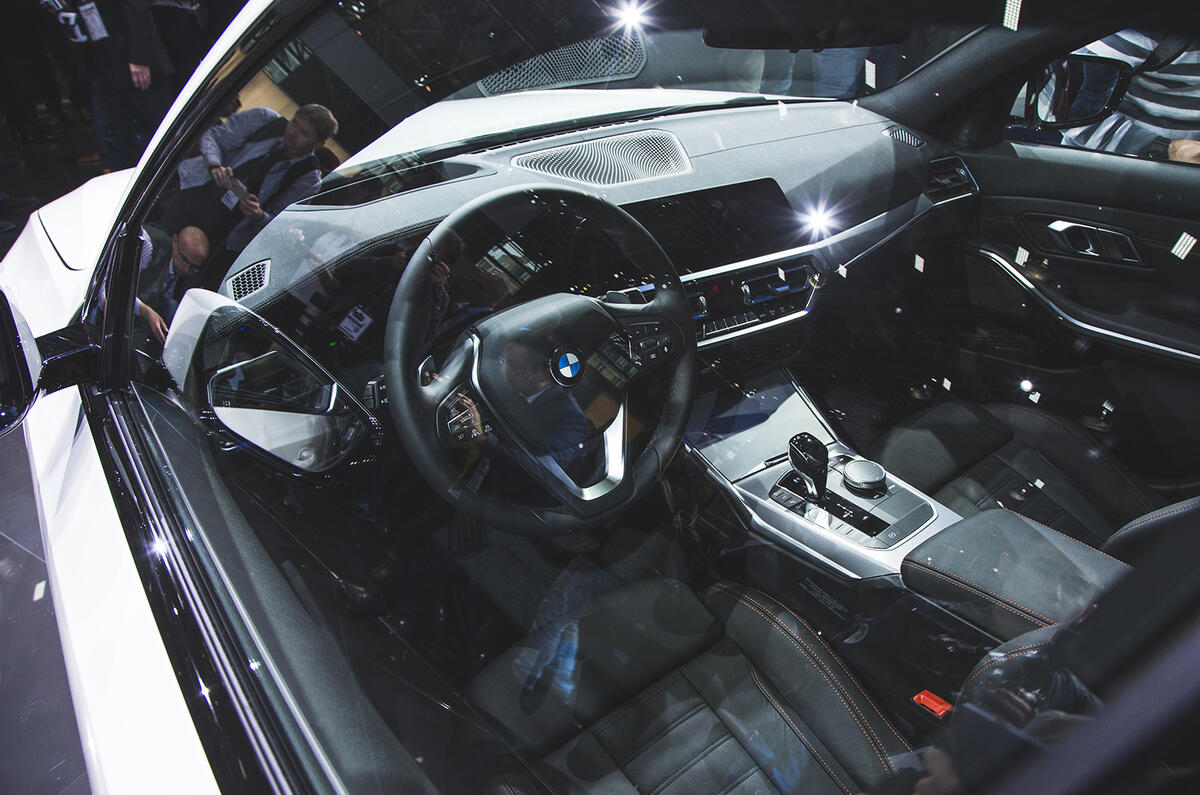















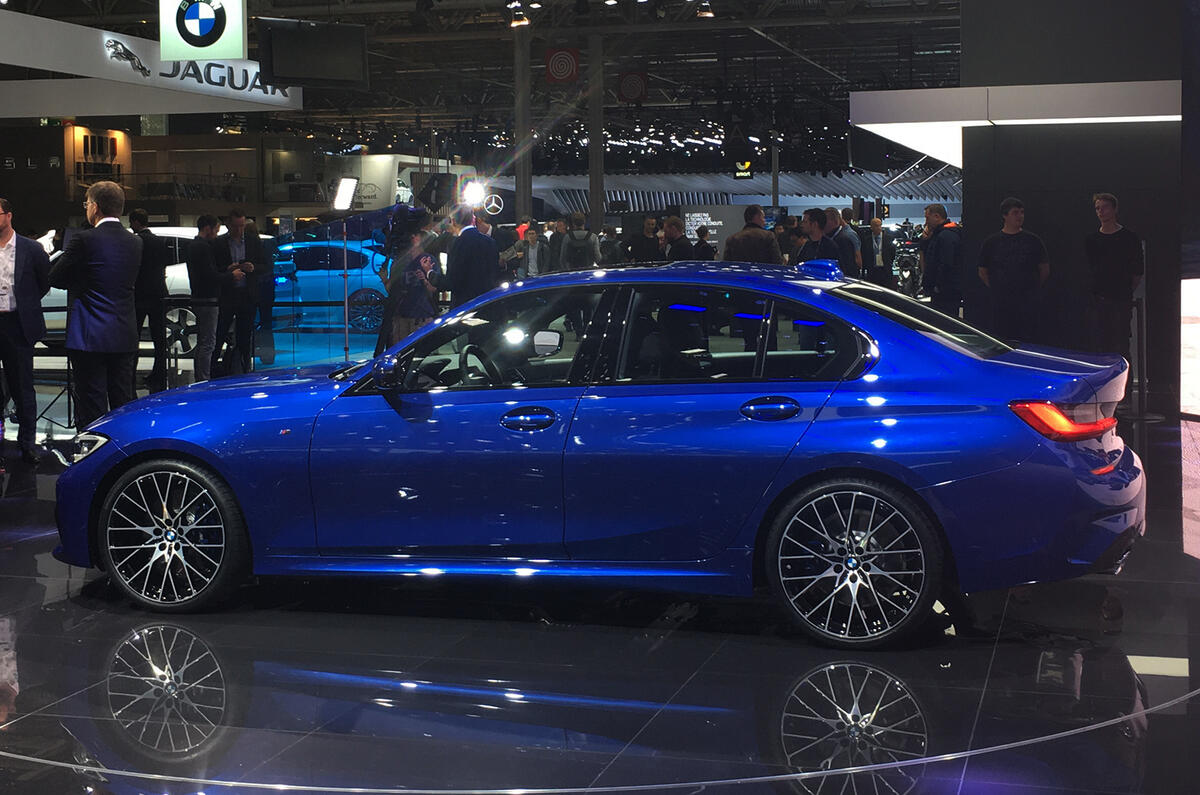











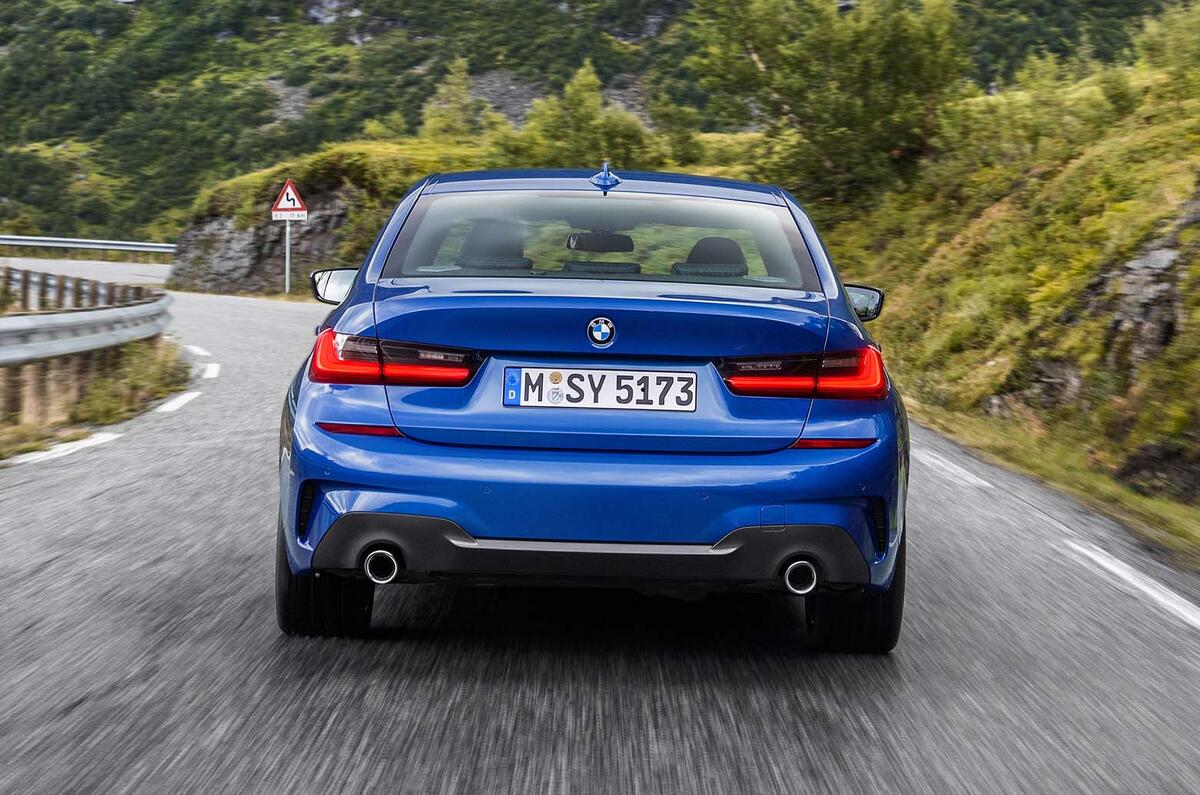

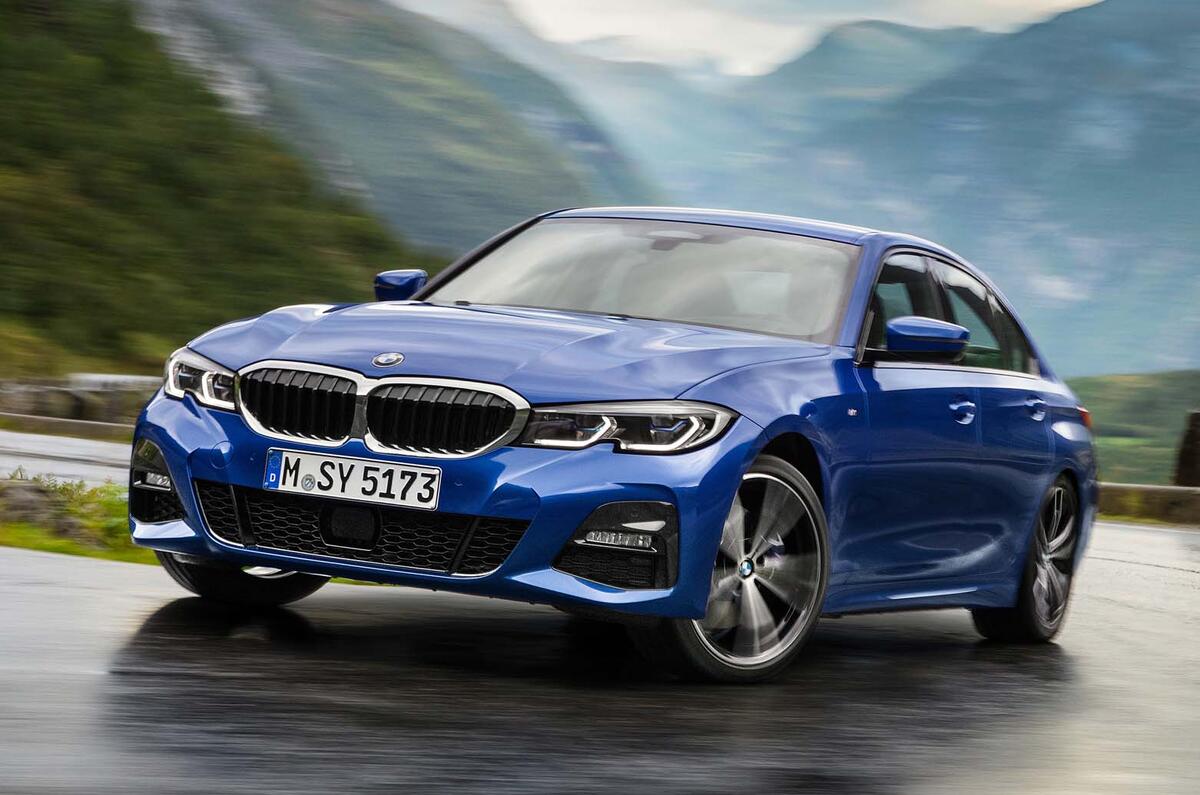










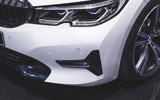















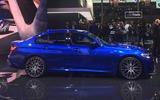







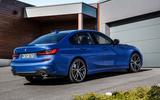





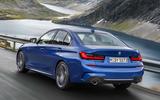
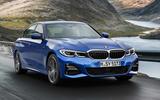






Join the debate
Add your comment
Side silliness
The crease just above the sills is ugly and completely pointless, other than to increase repair costs at the bodyshop if somebody nudges into it while parking alongside.
Wow
I can't believe it, it's like some kind of revolutionary new car #zowie
Come back BMW. The 3 Series
Come back BMW. The 3 Series has to be shorter. It should have NA L6 too.